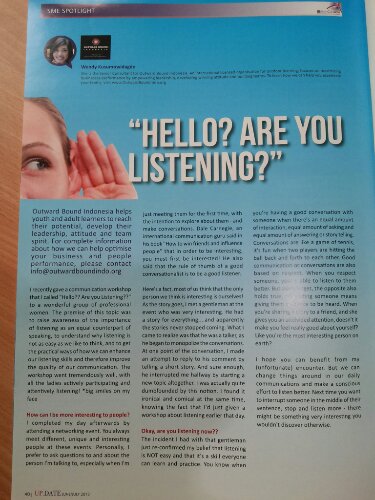I used to look down on the old cliché, “your wedding day is the best day of your life”. I just didn’t buy it; I suppose I’ve always been a realist rather than a romantic.
My suspicions heightened in the lead up to my own wedding day with both myself and my fiancé engulfed in the usual stresses of work, but also the additional pressures of wedding planning, to the point where we became each other’s own worst enemies. This cloud of animosity loomed in my mind until I actually had qualms and doubts about the big day. Fortunately, with the support and advice of caring people around me – my fiancé included – I was able to find peace again, faith was restored and it saved me. My husband Jake and I tied the knot last month, and it was the greatest decision I’ve made yet!
One of the best pieces of marital advice we received was from the publisher of this magazine, Alistair Speirs, who attended our wedding with his lovely wife of 26 years, Barbara. He kindly shared with us the key to a long lasting and happy marriage – forgiveness. We have all heard it before, but have we truly experienced its power?
Honestly, I couldn’t say I had until very recently. The state of the relationship that I was in with my then fiancé had been a wake up call and forced me to face the truth that happiness was my choice and my responsibility, not somebody else’s. I can proudly say that the first step I took for the good of my marriage was to forgive my partner for his past wrongdoings, whether he did them intentionally or not. This decision has set me free of grudges, made me happier and able to see him in a much more positive light, and in effect improved the dynamics between us.
What has forgiveness got to do with happiness?
My new definition of the word “forgive” is a state of mind where we voluntarily make a decision to let go of negative emotions caused by wrongdoings done by someone in the past. Allow me to dissect this definition.
A “State of Mind”
Forgiveness is not based on others’ actions but on our own attitude. We forgive not because somebody asked for it, not even the offender, but because we’re no longer allowing the hurt, disappointment, vengefulness, resentment and other negative emotions to occupy our mind. Forgiveness doesn’t mean being weak. It does not mean letting the offender off the hook. We can and should still hold others accountable for their actions or lack of actions.
A “Voluntary Decision”
In light of inter-personal relationships, forgiveness is a peaceful mental condition toward our offender that can potentially lead to reconciliation. Forgiving is not saying, “What you did was okay, so go ahead and walk all over me”. Nor is it playing the martyr, enjoying the performance of forgiving people because it perpetuates our victim role. Forgiveness is something deep and personal, it could be a one-way street without the offender ever knowing or respecting your decision. Getting another person to change his or her actions, behaviour or words isn’t the point of forgiveness. Think of forgiveness more about how it can change our lives — by bringing us peace, happiness, and emotional and spiritual healing. Forgiveness can take away the power the other person continues to wield in our life.
“Wrongdoings”
People make mistakes, it’s part of human nature. After we forgive, the offender might still repeat their offenses. Should we forgive again? Yes, why not!? Forgiveness is a process not an event, it’s a commitment not an obligation, and it might take time to get used to it, to heal and truly feel the benefits. But don’t mistake forgiveness for reconciliation. We can forgive someone even if we can never get along with them the same as before.
When we forgive, we remove our grudges and negative emotions against that person, we do it for our own peace and not their glory. Forgiveness can potentially change everything about our relationship with others because of what it can do for us. I hope this article is able to shed some positive light on forgiveness and how it can help in our journey towards happiness.







